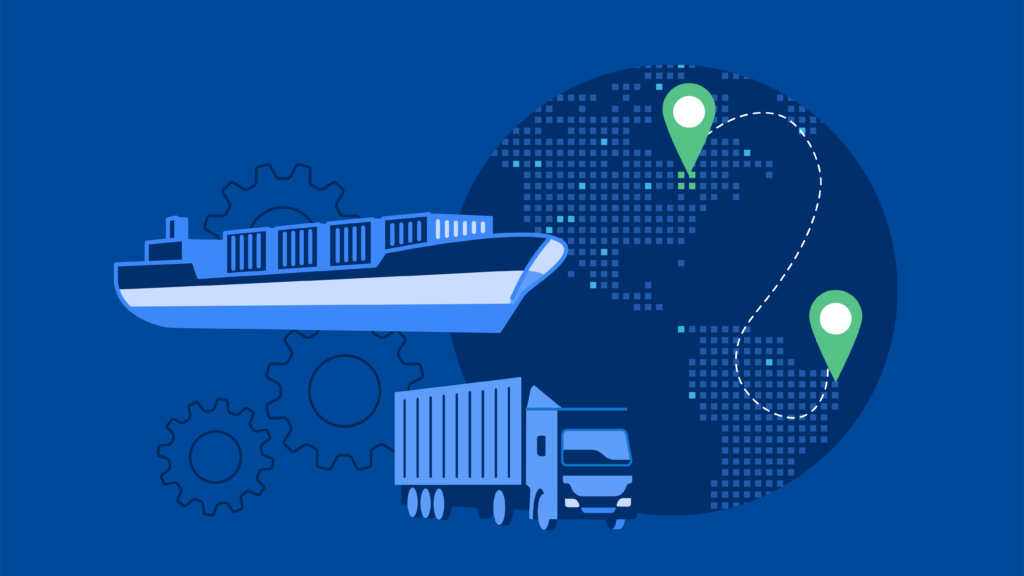It’s time to think beyond continuity. Here’s why business resilience is key to the future of risk management.
What you’ll learn about:
- The relationship between continuity and resilience
- Beyond continuity: Why enterprises need business resilience
- Achieving resilience ahead of recession
- Balancing resilience and continuity with Dataminr Pulse
As the U.S. economy approached a record-long 10-year economic expansion in June 2019, McKinsey experts pondered whether or not the boom would soon come to an end. Recession—like any business disruption—is rarely predictable, but one year later, the economic boom came to a screeching halt.
In July 2022, some held that the U.S. economy had slipped into a recession after two straight quarters of decline. Although McKinsey didn’t know a global pandemic would be the cause, it rightfully noted that resilience would be key to navigating the financial fallout.
Today, with another recession looming, businesses are again facing a world of uncertainty. And just as business resilience and continuity have done during COVID-19, they’re sure to play an important role in navigating the next disruption.
But what are continuity and resilience? What’s their relationship, and how do they work together during an economic crisis? Here we’ll answer those questions and explore what organizations can do to become more resilient in the face of financial uncertainty.
The relationship between continuity and resilience
Before enterprises can understand business resilience and continuity, they must first understand why they’re mission-critical. And to do that, they need to come to terms with the evolving nature of corporate risk.
Although the pandemic dominated corporate agendas over the past two years, the truth is that businesses have always navigated a wide array of disruptions. In the past, according to McKinsey, executives focused their risk management efforts on a small number of well-defined and primarily financial risks. Now, risk is evolving to encompass a much broader array of potential threats.
Read eBook: COVID-19 and Business Resilience in 2022
According to the World Economic Forum, the most severe risks on a global scale over the next 10 years will include the following:
- Climate action failures
- Natural disasters
- Biodiversity losses
- Erosion of social cohesion
- Livelihood crises
- Infectious diseases
- Human environmental damages
- Natural resource crises
- Debt crises
- Geoeconomic confrontation
Only one of the 10 potential threats—the debt crisis—can be classified as financial. In contrast to years prior, modern organizations are at odds with an increasingly unpredictable risk landscape. From geopolitics and natural disasters to cybersecurity and supply chain disruptions, business operations are threatened by a greater volume of risks than ever before.
As nearly half of global investors predict the U.S. will enter another recession in 2023, business resilience and continuity planning are a must for all organizations.
Business continuity
Business continuity is an organization’s ability to continue delivering its products and services during and after a business disruption. In other words, business continuity management involves all of the processes and procedures associated with ensuring that critical operations are maintained to meet appropriate standards.
Central to this business process is the practice of continuity planning. A business continuity plan is a documented set of procedures that outline how to respond to disruption, while continuing to operate at an acceptable level. Business continuity plans identify the most essential functions, how they should be maintained and what needs to be done to mitigate immediate risk.
Business resilience
In contrast, business resilience transcends continuity planning. Resiliency, according to McKinsey, is the ability to deal with adversity, withstand shocks and continuously adapt to changing circumstances. Whereas business continuity planning focuses on immediate action, business resiliency prepares the organization to strategically withstand disruption over the long term.
That said, an effective resilience framework is designed through a strong orchestration of continuity planning, emergency response, crisis management and disaster recovery activities. Each discipline plays a critical role in an organization’s performance during the recovery timeline, which is as follows:
- Preventative steps: Before an incident occurs, develop business continuity plans, conduct risk assessments and organize response plans.
- Reactive steps: After the initial disruption, detect the incident and perform continuity activities such as incident management, emergency response and crisis management.
- Remediation steps: Once the risk is detected and critical operations are maintained, begin disaster recovery and performance assessment. This allows organizations to more easily adapt to changes and strengthen resiliency.
Ideally, continuity would be sufficient. But with the increased frequency and number of potential threats today, and the very real possibility of a recession, businesses need to think beyond their immediate risks.
Beyond continuity: Why enterprises need business resilience
To effectively manage risk in today’s business environment, organizations require a balance of both business resilience and continuity. An overreliance on one or the other can leave the organization exposed to near- or long-term risk.
According to Boston Consulting Group (BCG), resilience is a key driver of long-term performance. In fact, their data indicates that organizations who’ve outperformed their industry during crises were twice as likely to outperform in the long run. But the problem, according to BCG, is that the scales are tipped in favor of short-term responses.
Developing resilience may seem counterintuitive to businesses because investing in supply chain redundancies and certain technologies increases costs and cuts into revenue. Thus, organizations are facing a tradeoff between maximizing short-term efficiency and strengthening long-term resilience—the benefits of which are uncertain and only manifest over time.
Advantages of resilience
Organizations that successfully overcome their trepidation and commit to business resiliency often experience better outcomes than those that rely solely on continuity planning. According to BCG, these outcomes are enabled by three key advantages:
- Lower impact: Resilient organizations are able to soften the blow of an immediate crisis because they anticipate and prepare for disruption well before its occurrence. By recognizing threats quickly, they can implement risk management procedures and absorb the initial shock with fewer consequences.
- Faster recovery: Because they anticipate and prepare, resilient businesses are able to quickly determine the most optimal response to unexpected disruption. This allows them to restore business operations faster and lessen the severity of any impacts.
- Greater recovery extent: Resiliency isn’t merely surviving a crisis, it’s adapting and thriving amid major changes and shifts. Resilient businesses embrace change—even when it affects strategic and operational decisions—and are able to identify and then seize the opportunities it presents, positioning them for sustained, future growth.
Achieving resilience ahead of recession
Here are five best practices shared by resilient organizations that help them survive an economic downturn:
No. 1. Flexible cash flow and capital management
When economies are experiencing slow-growth periods or a downturn, being able to easily access capital is critical to financial resilience and stability. Resilient organizations ensure liquidity during uncertain times, thus affording them the flexibility to withstand sudden fluctuations in cost and revenue.
The manufacturing sector, for example, is historically one of the most recession-sensitive industries. Despite often being hit hardest by a downturn, manufacturers also historically recover faster and to a greater extent in comparison to the overall economy, largely due to flexibility and liquidity.
No. 2. Low cost-to-serve operating model
Ninety-three percent of C-suite executives believe their organization’s existence could be jeopardized by operating models that can’t keep up with the pace of disruption. In contrast, resilient organizations cut costs and streamline business operations, primarily through automation and digital technologies. These strategic actions allow them to eliminate friction, free up resources and reduce operational costs. Their resulting organizational agility is what allows them to account for changing circumstances and survive an unexpected disruption.
No. 3. Harmonized risk management
Whether up against a recession or not, resilient firms proactively manage risk and routinely engage in strategic activities such as a risk assessment or business impact analysis. Incident management and response plans are harmonized, practiced and adjusted as needed. By maintaining an organized and systematic approach to risk management, firms are quicker to mitigate risks and identify opportunities for continuous improvement.
No. 4. Supply chain redundancies
Redundancies in the supply chain may sacrifice short-term efficiency and increase cost, but they also maintain production quality and drive operational resilience. By fortifying business operations with a production capacity that can adapt to changes in demand, resilient organizations maintain continuity under stress. Emergency stockpiles, safety stocks and a diverse network of suppliers are key to achieving operational resiliency and surviving a supply chain disruption.
No. 5. Data-driven analysis
Resilient businesses take advantage of analytics that provide insight into risks and their potential impact. Data-driven insight not only improves organizational decision making, but also offers executives a line of sight into critical operations and helps them guide the business more confidently to recovery.
Balancing resilience and continuity with Dataminr Pulse
Business leaders need a solution that helps them balance both near-term continuity and long-term resilience simultaneously. Dataminr’s real-time alerting solution, Dataminr Pulse, does exactly that.
By leveraging hundreds of thousands of public data sources, Dataminr Pulse delivers the earliest and most comprehensive signals of emerging risks and high-impact events—at the global, regional and hyperlocal level. Within seconds or minutes of occurrence, Pulse alerts on the information businesses need to:
- Assess the potential impact of a potential threat, crisis or unexpected disruption
- Ensure the safety of employees, customers and assets
- Initiate the most appropriate business continuity plan as quickly as possible
- Determine a long-term course of action
When handling an emerging threat, time is of the essence—that’s why having the earliest possible indication is a critical advantage. No matter the type of risk, be it extreme weather, a ransomware attack or reputational crisis, having access to real-time information helps organizations gain an early and clear line of sight into an incident, giving them more time to assess and direct the right resources quickly and efficiently—so they can deploy well-informed response plans.
Dataminr Pulse also offers geovisualization and collaboration workflow capabilities. These tools are designed to help organizations swiftly move from risk detection to mitigation and manage ongoing crises as quickly and effectively as possible.
Geovisualization provides rich visual data that security teams can use to assess potential threats in proximity to their employees, locations (e.g., offices, warehouses), supply chains, and other assets. This visual context enables teams to seamlessly picture their global footprint to better assess the full scope of potential disruptions, and take action faster and more proactively.
With Pulse’s collaborative workflow tools, businesses can rapidly operationalize the real-time information they receive, allowing them to maintain a strong security posture. The collaboration capabilities also allow for the creation of iterative response plans and playbooks that teams can use to ensure they’re prepared and ready to tackle the next crisis or disruption.
With a potential U.S. economic downturn approaching, and today’s ever-evolving risk landscape, organizations must remember to balance both continuity and resilience. The ability to bounce back quickly is one thing, but the ability to thrive in the new normal is entirely another. Developing a resilient business is no easy task, but proactively leveraging real-time information is a great place to start.
Learn More
Learn more about the power of Dataminr Pulse by requesting a demo today.
Risk in Real Time newsletter
Sign up for our monthly newsletter for the latest on security and business trends, news and insights.
SUBSCRIBE



